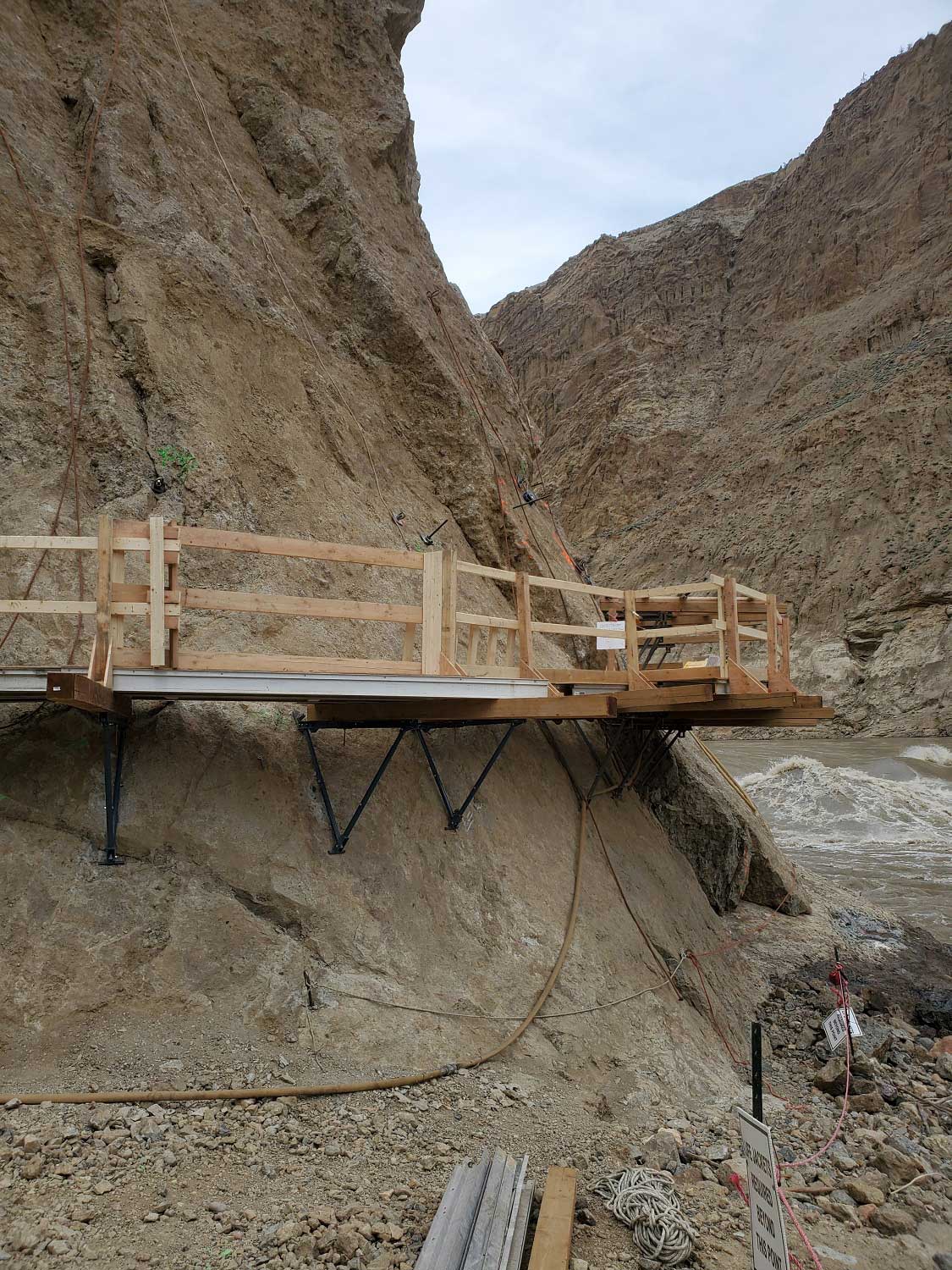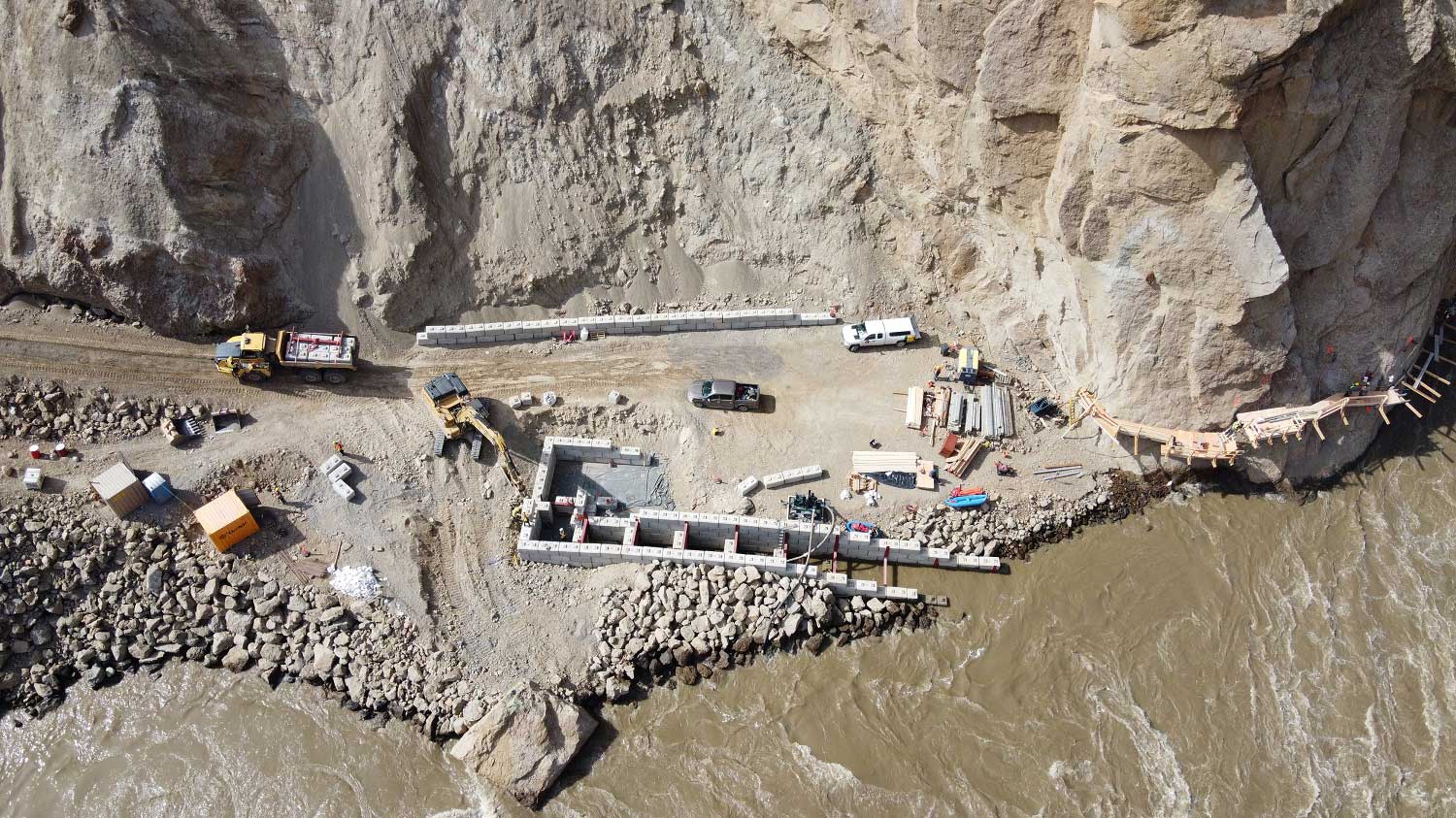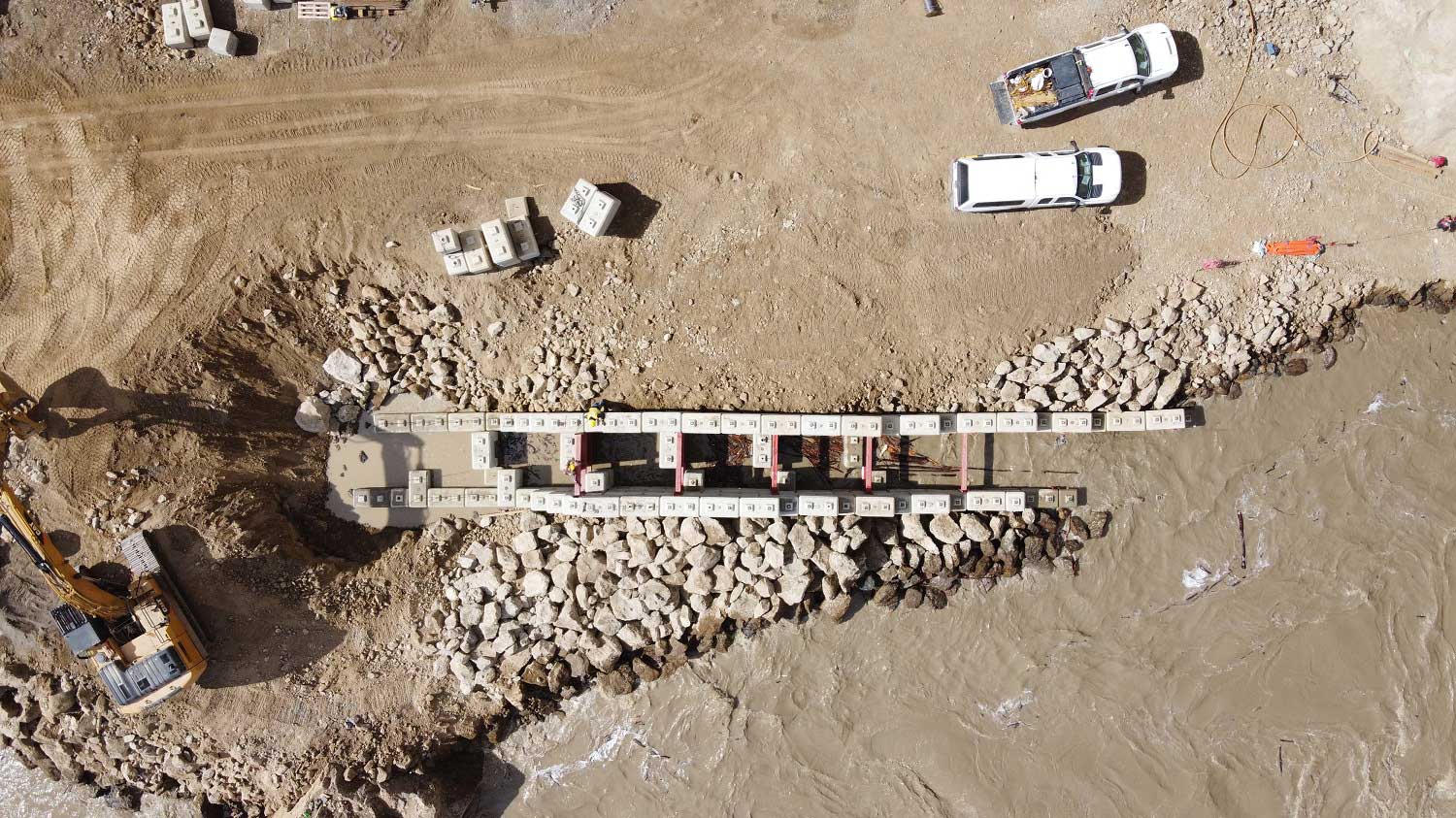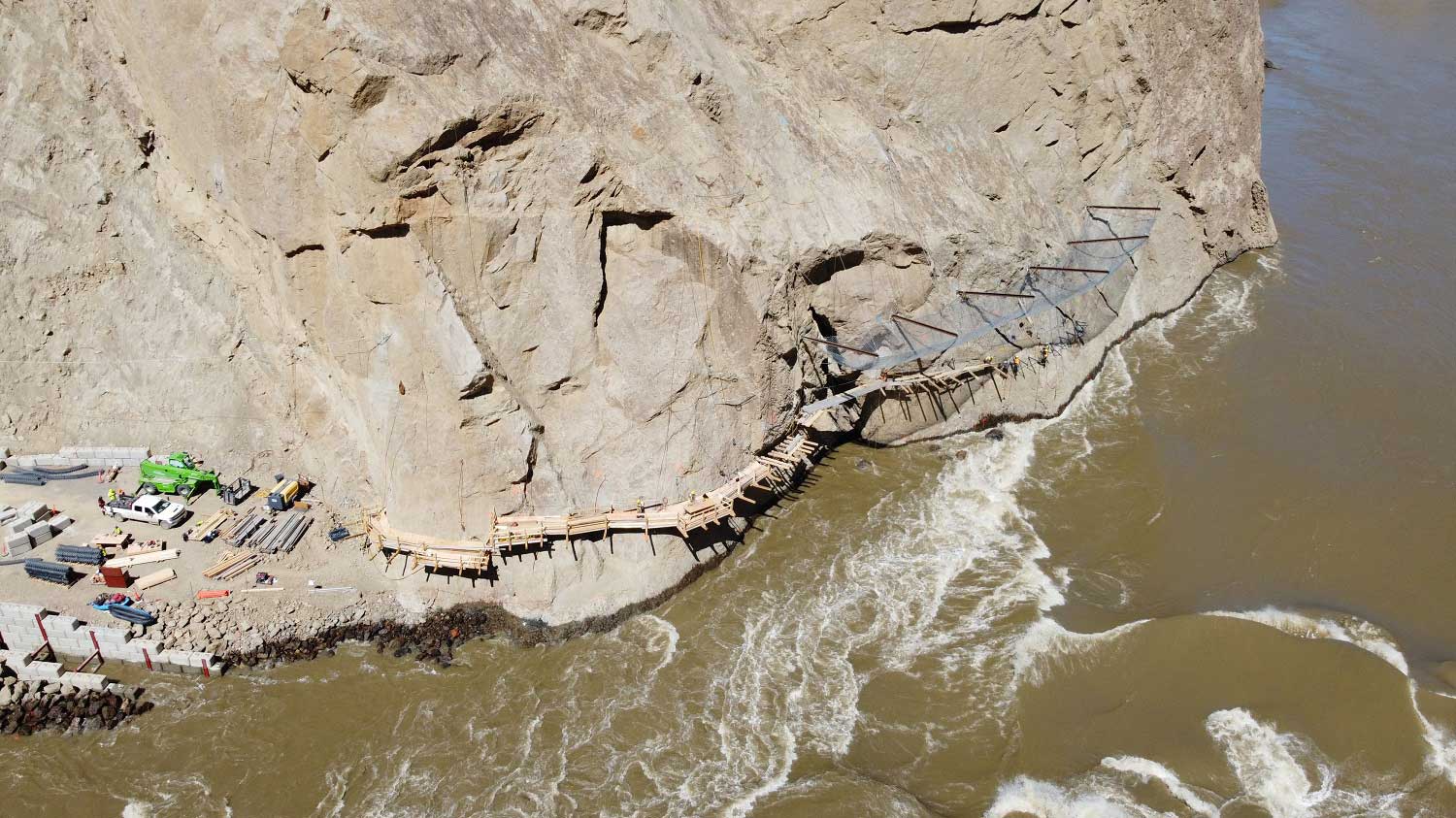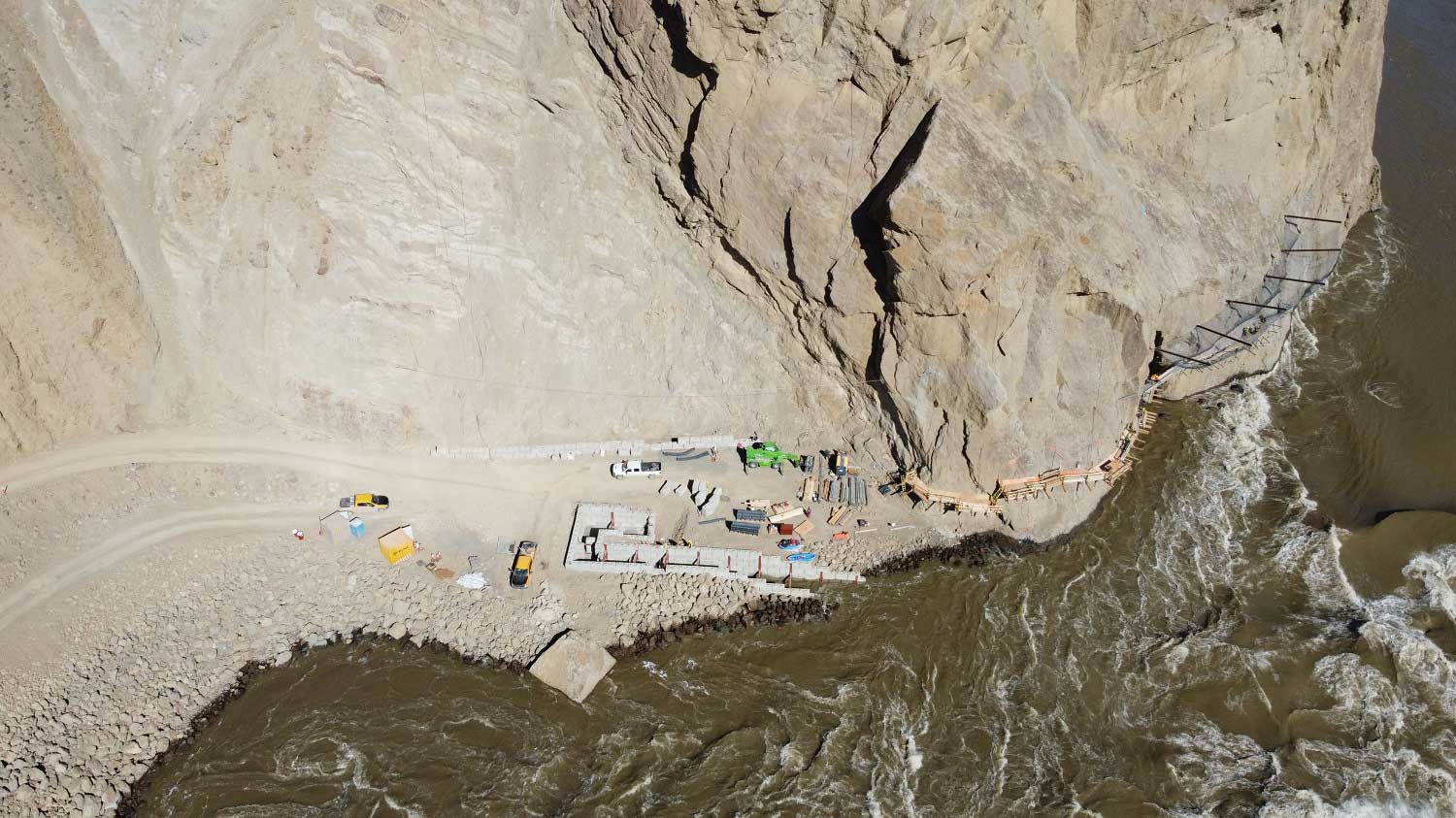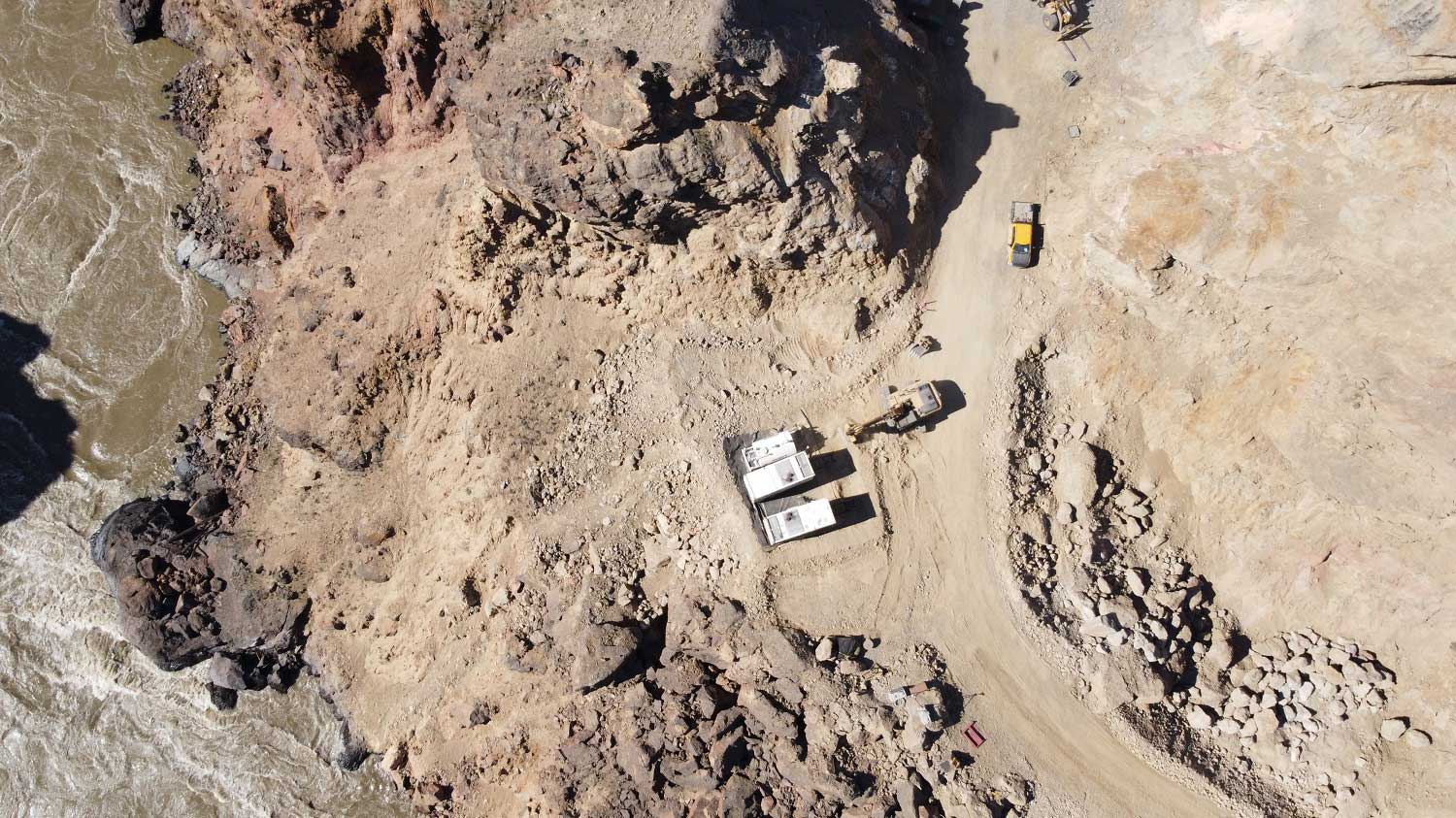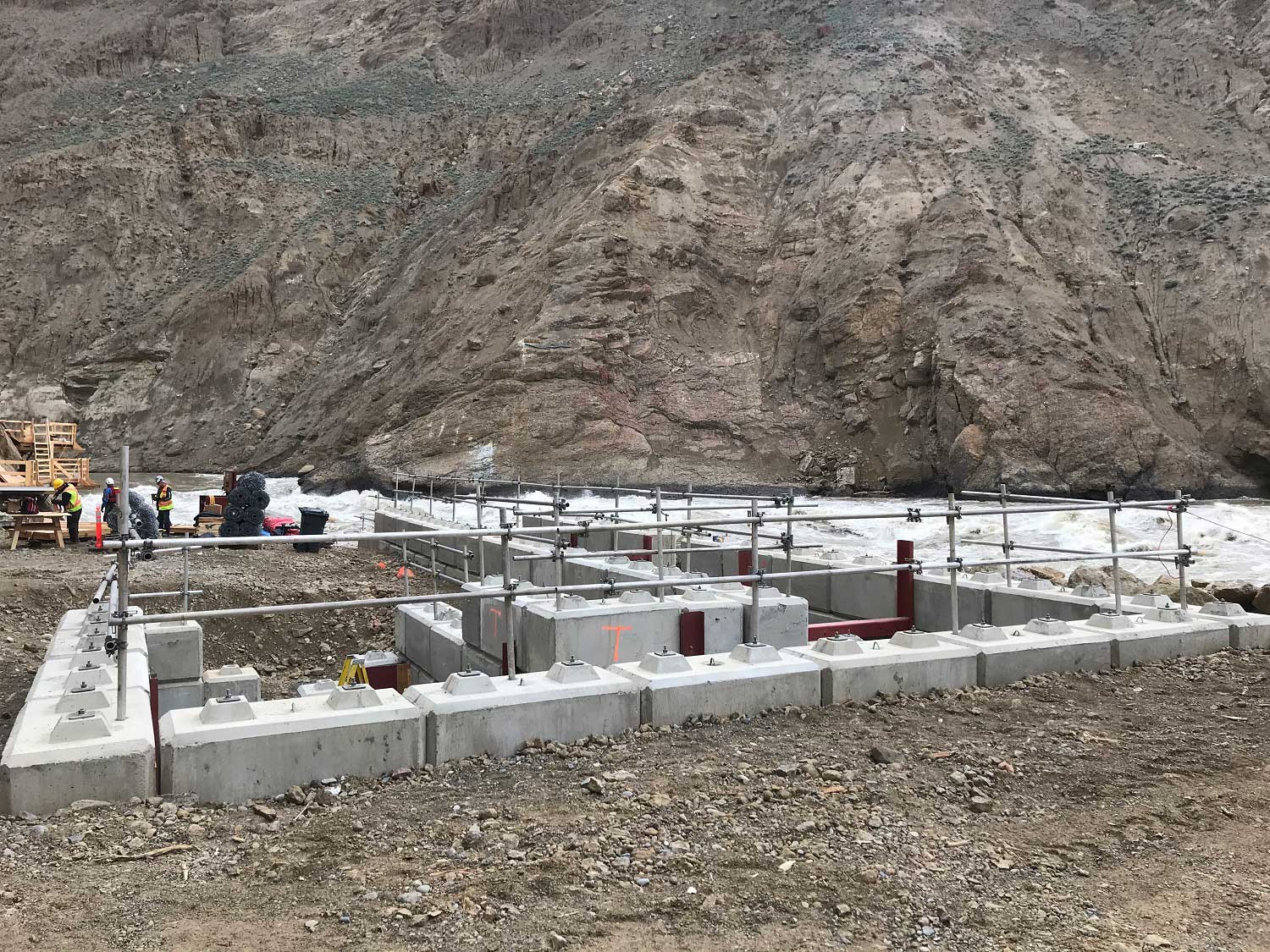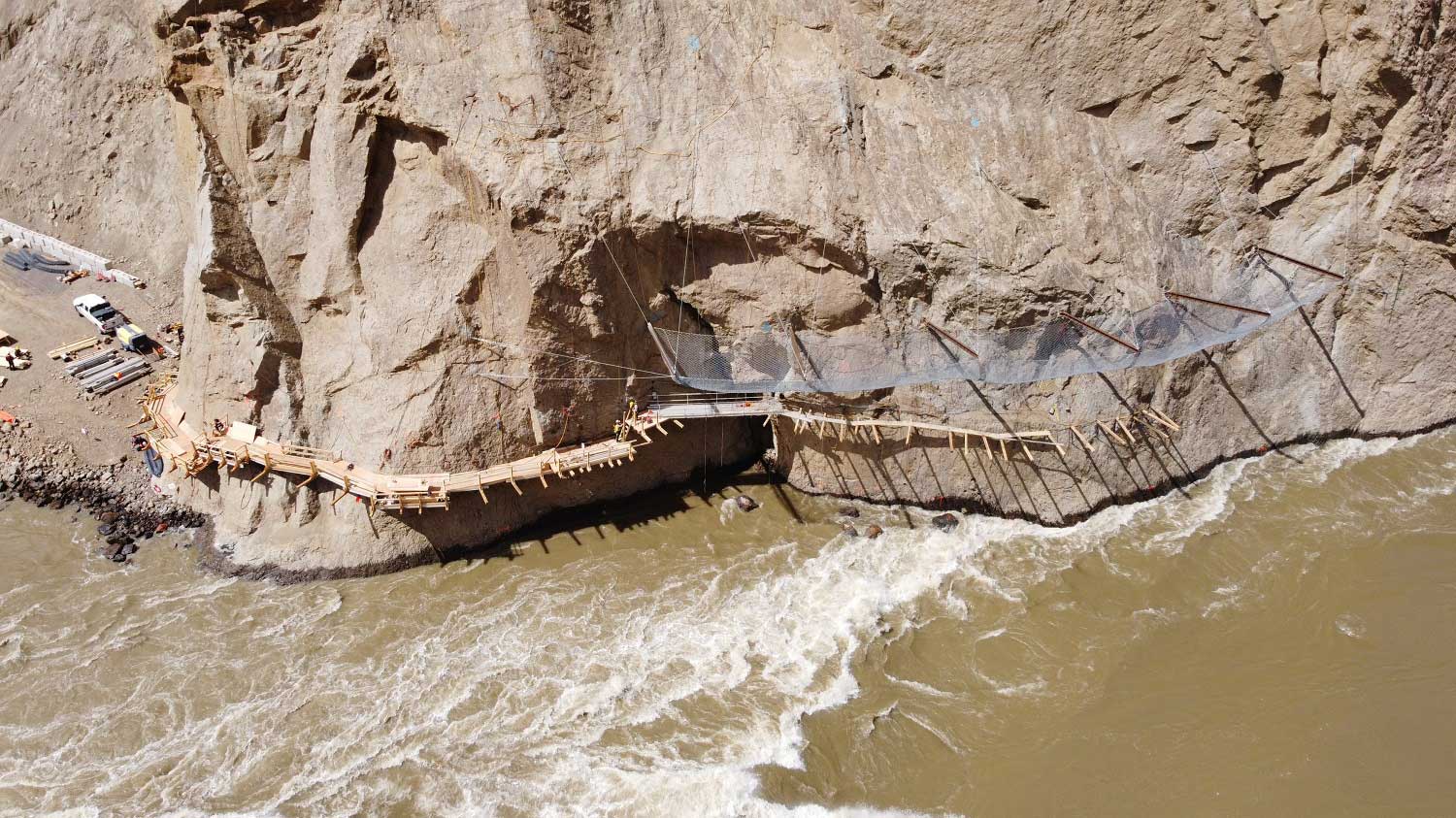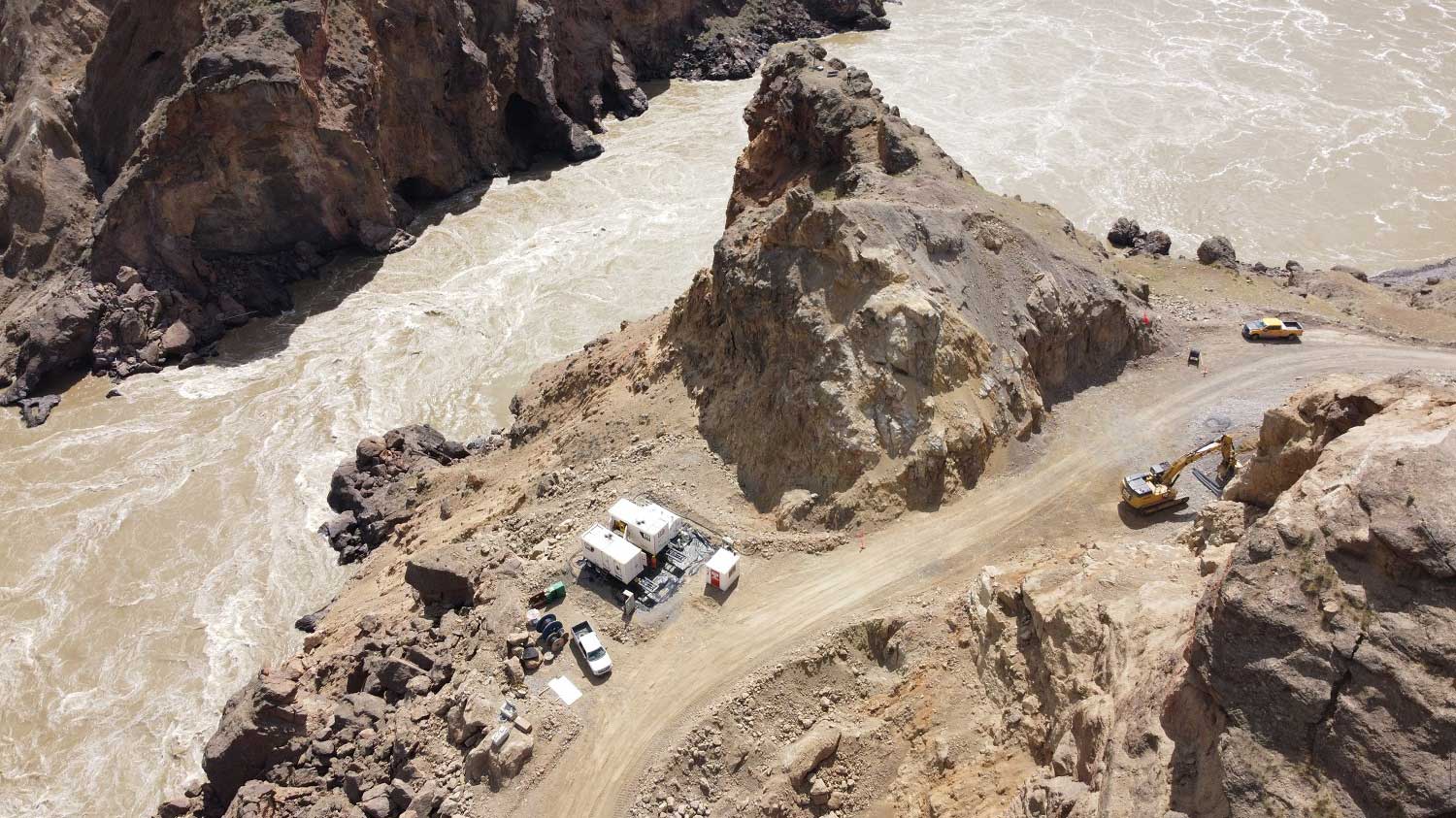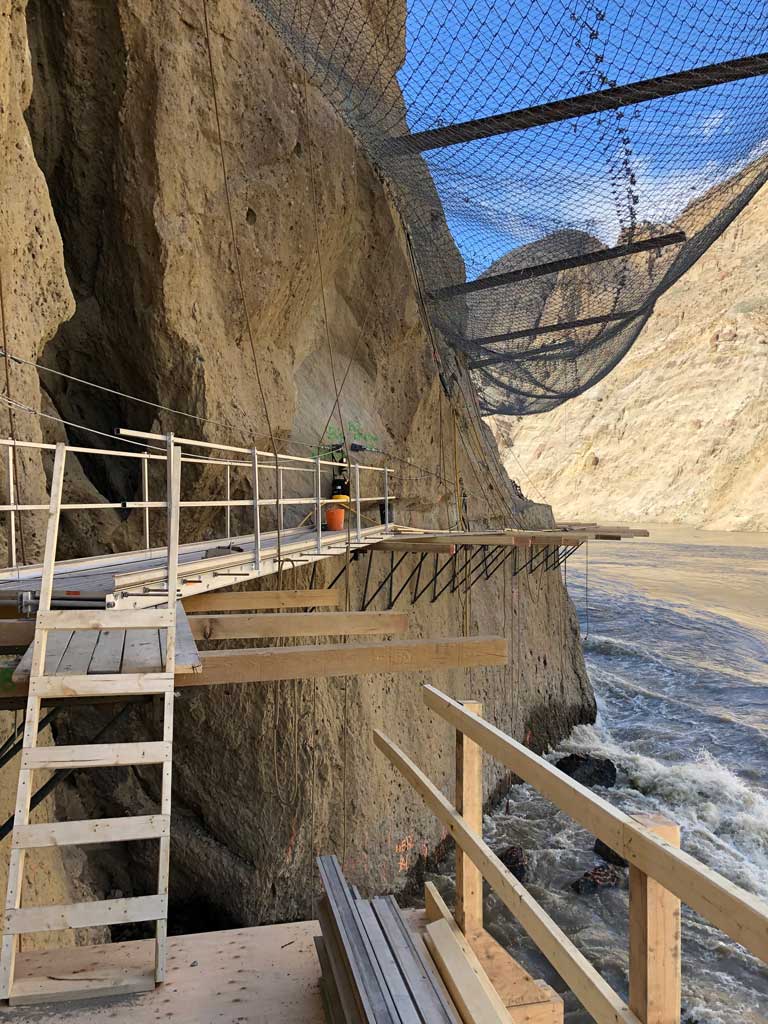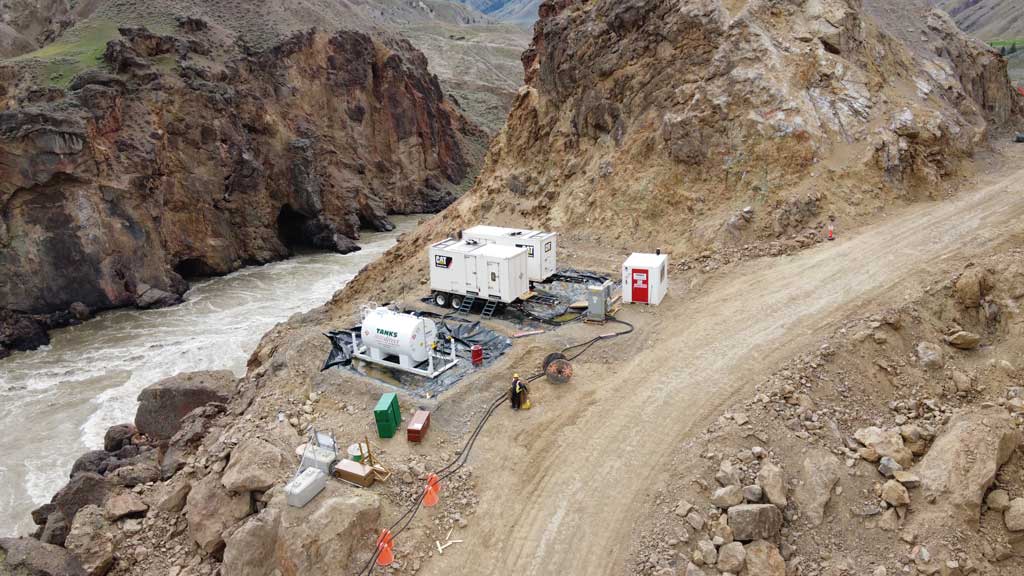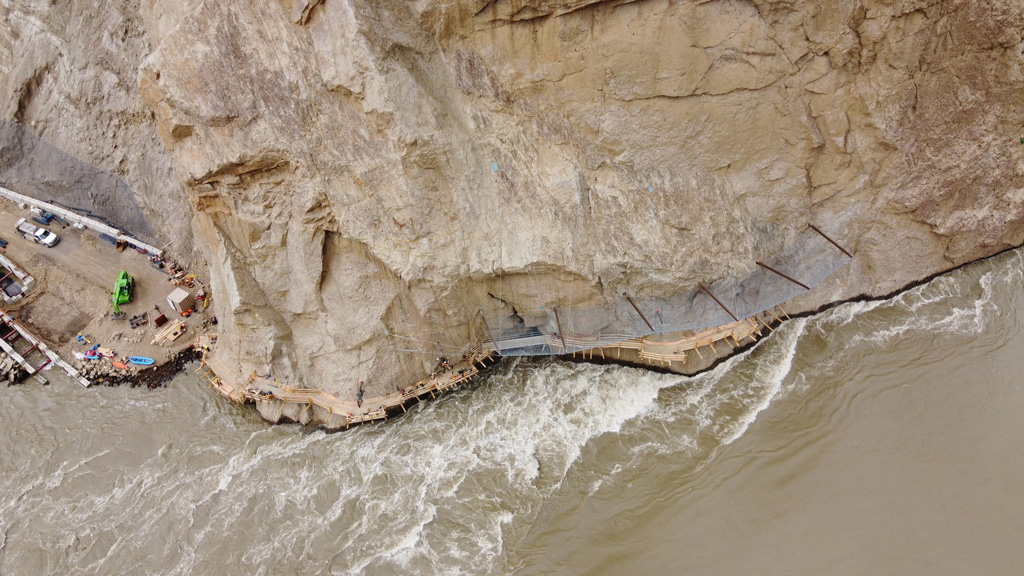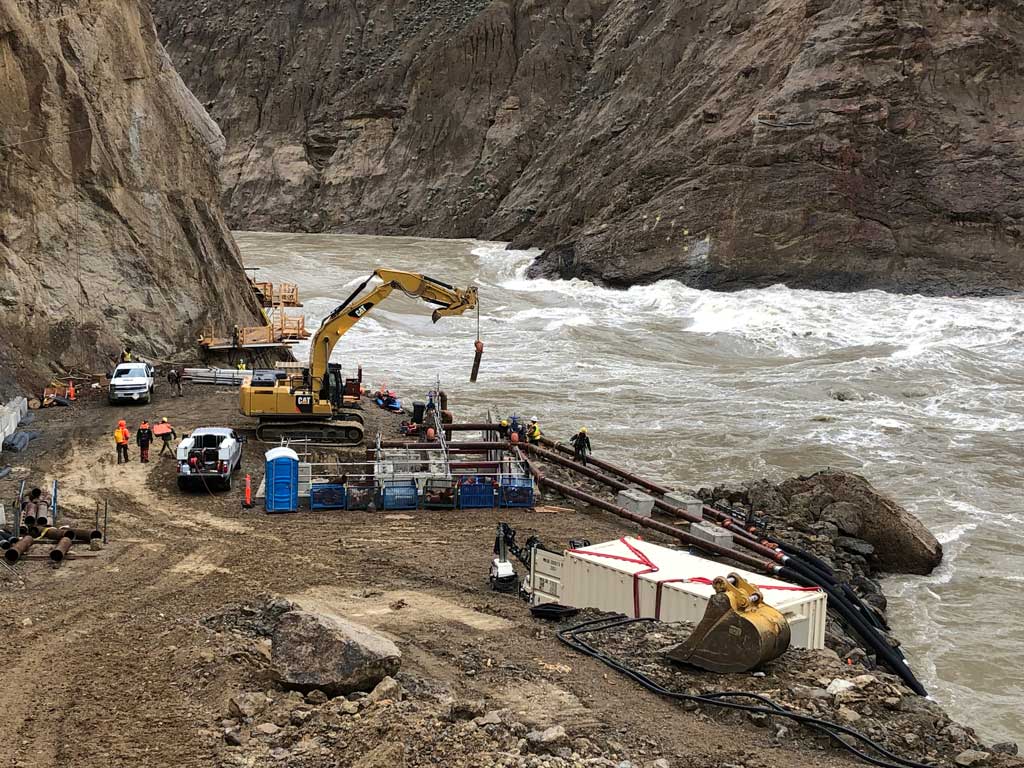Big Bar landslide response information bulletin
May 8 2020
Ongoing onsite operations
Work continues to progress on the pneumatic fish pump system, despite pauses in construction this week due to high water levels.
An unexpected rock fall earlier in the week highlighted the hazardous and dynamic operations at the Big Bar landslide site. Previous slope reviews did not detect this instability. Fortunately, there were no injuries.
Crew safety is paramount. Prime contractor, Peter Kiewit Sons ULC, has implemented a number of measures to further enhance safety at the worksite following the rock fall. First, Kiewit installed a concrete retaining wall along the affected rock fall area. A dedicated spotter is now onsite during work hours to watch for falling rock and alert workers with an air horn and by radio should they detect movement. The number of workers in the construction area is also being limited and once the construction of the fish ladder is completed a mesh curtain will be installed on the slope to protect the site during summer operations.
Presentation to Maa-nulth Fisheries Committee
On May 4, we shared an update with the Maa-nulth Fisheries Committee regarding winter work milestones, spring work underway and planned summer work. Participants were pleased with the progress and acknowledged the work of everyone involved to restore fish passage at the slide site.
What is a concrete fish ladder and how does it work?
To support fish passage at the Big Bar landslide site this summer, crews are constructing a temporary fish ladder that will guide fish to a holding pool. From there, fish will enter the pneumatic fish pump to migrate past the slide site.
Fish ladders are either permanent or temporary structures built to provide alternative fish passage through a barrier. While designs vary based on the type of obstruction, flow levels, and species of fish affected, the general principle is the same. These structures contain a series of pools that fish reach by swimming against a directed flow, then leaping through rushing water to a pool to rest. Fish repeat this process until they re-enter the river upstream. Fish ladders are designed to ensure that the water velocity does not exceed the swimming speed of fish to aid movement.
The temporary model being built at Big Bar is a commonly used ‘vertical slot fishway’ design; similar to the permanent one installed at Hell’s Gate. Fish will swim through a thin, vertical open slot between each segment, or ‘cell’, that makes up the ladder. Each cell is approximately 30 to 40 centimetres higher than the previous one. The ladder can operate at varying water levels and takes advantage of natural fish migrating behavior.
Usually, a ladder allows fish to swim past a barrier aided by river water flowing in from the top. At Big Bar, work is being done to create an artificial stream of water through the fish ladder. Starting with a series of large pumps supplying water or ‘attractant flow’, fish looking for an alternative route over the slide will be lured upstream into the pools. As fish swim further, they will end up in a holding pool at the same elevation as the fish pump. The use of a fish ladder encourages ‘volitional entry’, or natural fish behavior whereby they willingly enter the pneumatic fish pump. The use of this structure will help minimize stress to fish from handling and increase fish health – both key deciding factors for the design choice. The fish will then enter the pump and move over the slide site using a series of long tubes, suspended by a hanging system, above the river level.
In addition to acting as the entrance to the pneumatic fish pump system, the temporary fish ladder will play another critical role at the slide site. Should there be a gap in fish pump operations for any reason, teams will be able to collect fish from the holding pool, transfer them to tanks, transport them 4.5 km north to the French Bar Creek riverbank, and release them into the Fraser River.
When completed, the concrete fish ladder will be approximately 50 metres long. Building such a large temporary structure on difficult terrain, and ensuring its design is attractive to fish, was a challenge. In response, the ladder is located on a bench as close to the barrier as possible so fish can easily find it. The temporary structure is secured with large boulders to help reduce potential erosion of the work area. During freshet, currents can exceed eight metres per second. Therefore, crews are building the structure from bottom up, using steel rods to reinforce 500 interlocking concrete blocks to maintain its structural integrity.
There are a number of unique features to the Big Bar modular concrete block fish ladder. Studies have shown that salmon migration in the Fraser River occurs primarily during daylight hours, with peak activity in the early mornings and evenings. To extend this activity into the nighttime, crews are placing large floodlights at the entrance of the ladder to guide fish into the pool. Crews are also building a ‘debris boom’ at the entrance to prevent material like logs from entering and damaging the pumps.
Although rising water levels and difficult terrain continue to challenge construction, the team is making progress. Once operational, the temporary fish ladder will play a critical role in supporting fish passage over the slide site during the summer should natural passage be impeded.
The working platform will help crew with the installation of the pneumatic fish pump system tubing.
Steady progress is being made on the construction of the fish ladder, despite high water levels this week.
Aerial view of the concrete fish ladder.
http://www.pac.dfo-mpo.gc.ca/pacifi...lide-eboulement/bulletins/2020-05-08-eng.html
